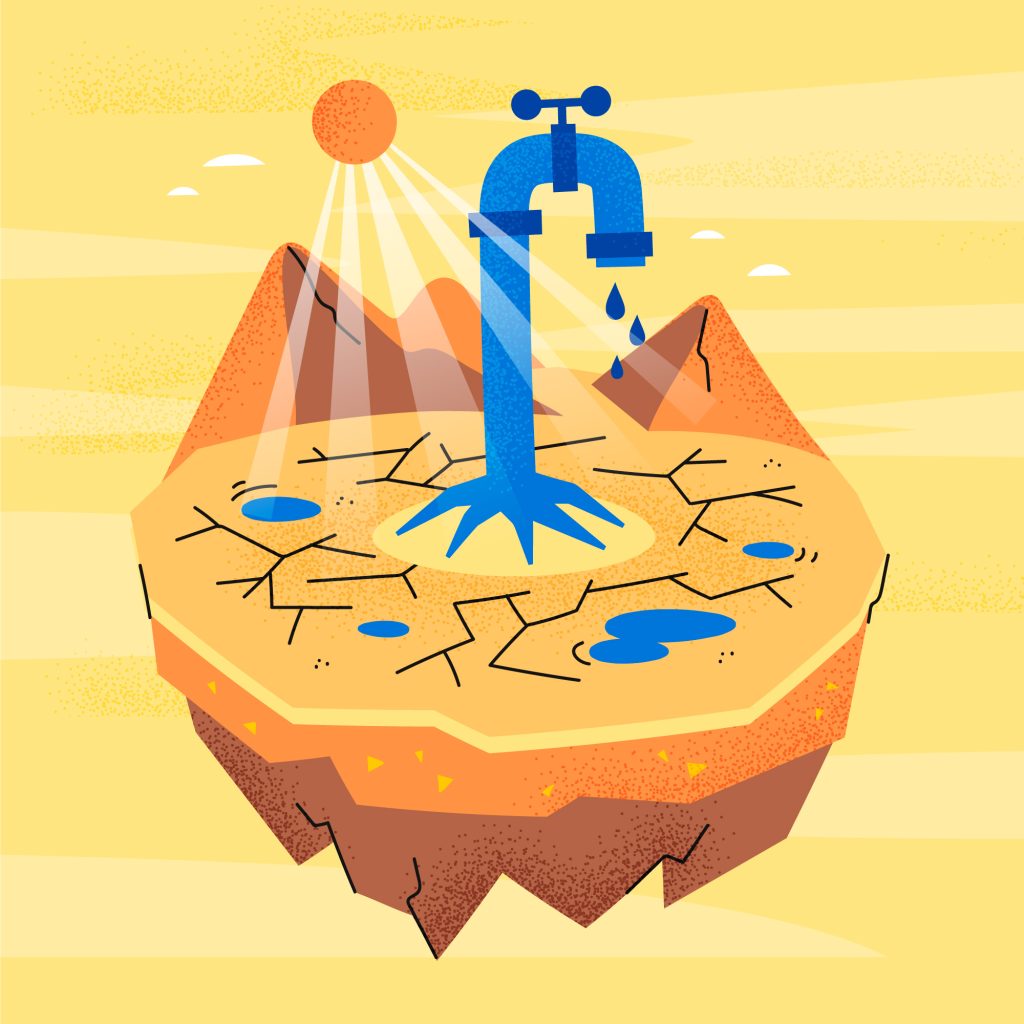Remember those school textbooks that emphasized water conservation and how our teachers probably made us recite the ways to conserve water a million times. A majority of us would have implemented the lessons learned at home by closing the tap when not in use, reusing water whenever possible and other conservation methods – just to steal a spot in your teacher’s heart the next day when she or he asked about who all practiced water conservation. But the real question is, how many of us actively conserve water unless we hear about a crisis? Suddenly, when the need knocks on your door, we realize that water conservation was never just an abstract concept.
India’s Water Crisis: The Best Murder Mystery You’ll Ever Witness
India has seen water scarcity as an uninvited guest that refuses to leave. And the fun part, is that just how a Netflix drama unfolds, the water scenario is similar and packed with suspense and twists, be it droughts or floods.
Considering Maharashtra, for instance. In regions like Marathwada, wells are drying up faster than your salary towards the end of the month and groundwater levels are continuously deteriorating.
Big cities like Chennai, Bengaluru, Delhi and many are dealing with their own set of water crises too. Water tankers are worshipped during summers and neighbours suddenly turn to be your best friends just to gather extra buckets. But here’s the irony, India is home to heavy rainfall. Poor management and storage has led to this dismay.
The Indian government has paved the way for various programs to tackle water scarcity. Jal Shakti Abhiyan is a groundwater recharge mission and Atal Bhujal Yojana has focused on sustainable practices to manage the same. Specially addressed towards Maharashtra, Jalyukt Shivar Abhiyan has encouraged construction of small check dams and reservoirs in villages.
More reservoirs and smarter ways to conserve can help our future generation enjoy the liberty of having taps that actually work and aren’t stuck spending a fortune on bottled water.
Water Reservoirs: The Ultimate Thirst Quenchers
Water is running out much faster than you think. Yes, we belong to the blessed slot of having clean water every time we turn on a tap. But there are a few of our pals who face shortages every year. Many say monsoons are to be blamed but what if we can devise a solution that is beneath our feet, that can be captured and stored for our use. If we humans can curate the best memes out of the catchy, “Moye, Moye” chorus, I believe the idea of water reservoirs and how beneficial they are, are just peanuts.
Take a moment to picturise a world where you see rivers, lakes and every other water body replenished. As replenished as the Pacific ocean presented in Life of Pi. (Not as much to drown you). But, yes enough to let communities thrive in the driest regions of the world as well. Sounds like a sci-fi adventure? Well, worry not as universities, institutions along with the government are here to open doors to that adventure for all of us. They are transforming the water conservation landscape by constructing water reservoirs, big enough to serve a whole campus.
One great example? Symbiosis International University in Lavale, Pune.
Symbiosis Lavale: The Campus That Dumped Water Shortages for Good!
Situated on the vibrant green hills of Pune, Symbiosis International University at Lavale is home to Bandhara, a water reservoir built at the foothills of the campus. It has the capacity to hold 35 crore litres of water, making the campus self-sufficient needing no external source of water supply. Comprising over 50 acres of land, the reservoir is well-equipped to serve the neighbouring regions and irrigation needs.
The reservoir captures rainwater during the monsoons and is used for various prudent purposes. The result? A green campus that no longer dreads water shortage and also a great view from “Aqua Point”, a designated area in the campus, where most students grab an Instagram-worthy sun-kissed picture.
Universities Taking Charge: Pioneers In Water Conservation
Symbiosis isn’t the only one set out on this journey. Many universities have taken similar initiatives to conserve water. IIT Gandhinagar has focused on devising a wastewater treatment system that efficiently recycles more than 6,00,000 litres of water daily for irrigation and other reasons. IIT Kharagpur and Swami Rama Himalayan University have also worked on similar lines of pulling together, a rainwater harvesting system ensuring groundwater recharge. Adding to that, University of Hyderabad revived multiple lakes on campus.
If universities and other institutions can implement this sooner, future students could have water conservation lectures while enjoying a beautiful sight of a well-maintained lake. Yes, and that’s how college or school infrastructure can be both educational and Instagram-worthy.
Final Say: A Mic Drop, But With Words!
Now, why reservoirs? As climatic patterns are uncertain just like your WiFi during Zoom class attendance, reservoirs can do wonders and help store water that can be useful during summers. Irrigation and reduction in crop failures are highly guaranteed. Cities too can implement water reservoirs instead of overly depending on groundwater. A rich biodiversity attracting wildlife can be attracted along with pillars towards ecotourism.
Reservoirs have proved to be more than just storage. They are our lifelines. Symbiosis University and few other institutions have proved that many have already joined towards the mission. So folks, it’s time to take a step. Let’s leave something treasured behind for the generations to come. It might not be a precious metal or an antique masterpiece, but water. Enough water so that taking a shower remains a daily ritual, not a luxury.
Sources
https://campus.iitgn.ac.in/pdf/Water-Report-lv.pdf
http://mrsac.maharashtra.gov.in/jalyukt
https://iitsystem.ac.in/sites/default/files/greenagenda/1/GreenInitiatives.pdf







